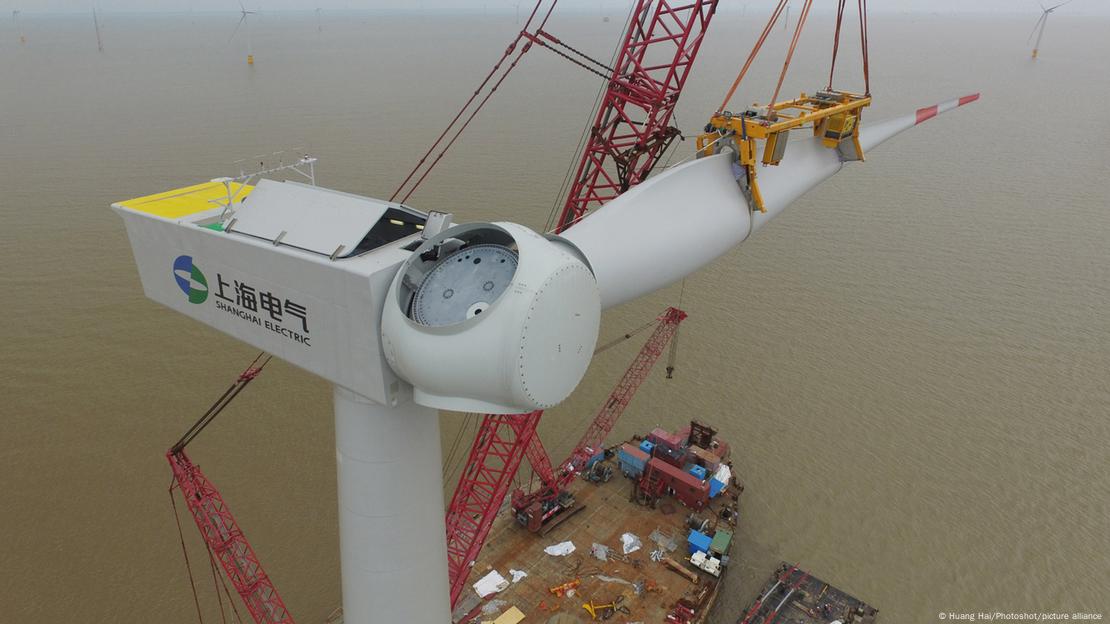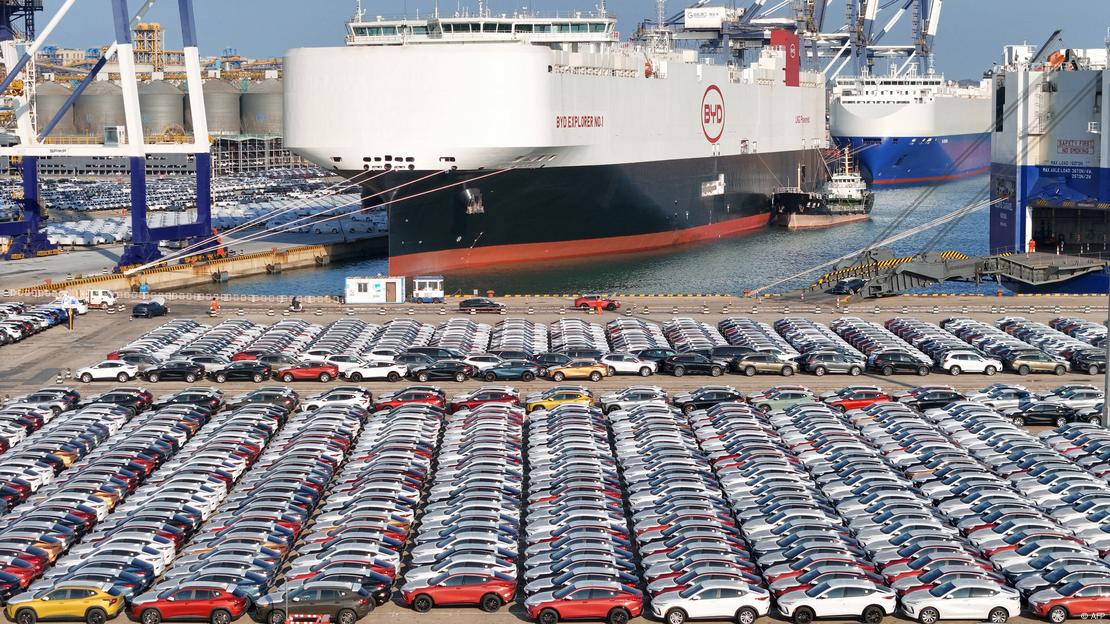Dirk Kaufmann
July 17, 2024
Even as the German government moves to bar components made by China's Huawei and ZTE from core parts of the country's 5G networks, some German companies are looking to work with Chinese firms in other critical areas.
Even as the German government moves to bar components made by China's Huawei and ZTE from core parts of the country's 5G networks, some German companies are looking to work with Chinese firms in other critical areas.
Germany's communications networks are critical, with the government wary of allowing China to provide the technology for it
Image: Boris Roesller/picture alliance/dpa
On July 11, the German Interior Ministry (BMI) announced that by the end of 2026 components made by Chinese technology companies Huawei and ZTE "must no longer be used" in building up the country's next-generation 5G mobile networks.
Already existing components, the BMI decided, "must be replaced by the end of 2029."
The German government considers 5G networks "critical infrastructure" because they are crucial for the energy sector, transportation, health care and financial services.
The ban comes as Chinese technology firms are increasingly viewed with suspicions for their allegedly too close ties to the government in Beijing. Especially Beijing's drive to make companies like Huawei and ZTE world leaders in high-tech sectors makes Western governments wary of giving them too much influence on their national infrastructures.
On July 11, the German Interior Ministry (BMI) announced that by the end of 2026 components made by Chinese technology companies Huawei and ZTE "must no longer be used" in building up the country's next-generation 5G mobile networks.
Already existing components, the BMI decided, "must be replaced by the end of 2029."
The German government considers 5G networks "critical infrastructure" because they are crucial for the energy sector, transportation, health care and financial services.
The ban comes as Chinese technology firms are increasingly viewed with suspicions for their allegedly too close ties to the government in Beijing. Especially Beijing's drive to make companies like Huawei and ZTE world leaders in high-tech sectors makes Western governments wary of giving them too much influence on their national infrastructures.
Wind power market becomes new battlefield
Meanwhile, another German-Chinese collaboration has caused a stir in this respect. Luxcara — an independent asset manager based in Hamburg, Germany, — announced it had contracted Chinese company Ming Yang to build the turbines for a wind project off the German coast.
"The decision for Ming Yang was based on an extensive due diligence exercise, covering the supply chain, ESG [environmental, social, and governance] compliance aligned with the EU taxonomy and cyber security supported by independent experts from renowned international advisors," the company said in a statement on July 2.
Energy supply is also considered critical infrastructure in Germany, as the country strives to generate 80% of its electricity from renewable sources by 2035.
Wind power is expected to be a significant part of the future electricity mix. Official German data show that in the first three months of this year, 38.5% of all electricity produced in Germany came from wind power. No other renewable energy source has grown as significantly as wind power.
Lars Haugwitz, senior consultant at Luxcara, says Luxcara "chose the most powerful turbines" for their Waterkant wind park project.
"Ming Yang was the only company that could meet the delivery time by 2028 with an 18.5-megawatt unit," he told DW, adding that the decision was based on a thorough review of all the offers they'd received during the international tender.

China has closed the technology gap with the West in wind turbine technology
Image: Huang Hai/Photoshot/picture alliance
With a little help from Beijing
To date, Danish company Vestas and German-Spanish manufacturer Siemens Gamesa have dominated offshore wind power in Europe. However, other German wind farm operators are now also considering Chinese companies as suppliers.
According to German business daily Handelsblatt, energy giant RWE is among them, with the newspaper citing limited supply of wind turbines in Europe and high demand as reasons.
In a statement, the Germany-based utility said it has no Chinese suppliers in its wind portfolio so far and was planning to continue working with established European suppliers. However, a company spokesperson told DW that the offshore industry needs to understand "what products Asian suppliers can offer and whether they meet the requirements in terms of technology, quality, safety and cost-effectiveness."
There are several reasons why companies from Asia are often leading in new technologies, says Michael Tenten, managing director of Pure ISM, a company focused on data security in the renewable energy sector. They were "mostly economic," he told DW, with "faster availability of the equipment" being the main one.
However, the Kiel Institute for the World Economy (IfW) in Germany found that in 2022, more than 99% of China's listed companies also received direct state subsidies and enjoyed easier access to critical raw materials, forced technology transfer in joint ventures and assistance in public procurement processes.
China's carmaker BYD, for example, has become the world's leading electric-vehicle manufacturer after receiving particularly high subsidies, IfW research director Dirk Dohse recently told Handelsblatt. It also benefited from subsidies for battery production and subsidized components.
"Although European industries often can't compete with Chinese prices, without China's subsidized technology, products needed for Germany's green transformation would be more expensive and scarcer," Dohse said.

Massive state support has contributed to BYD's meteoric rise as an electric vehicle maker
Image: AFP
Data leaks a security risk?
Pure ISM's Michael Tenten sees another reason for mistrust toward Chinese suppliers: data security.
"Manufacturers usually operate their own control centers to monitor the wind farms they build. As long as these control centers aren't located in Germany, there is always a risk of unwanted influence on operations from abroad," he said, adding that he isn't aware of any Chinese manufacturer currently planning or intending to set up its own control center in Germany.
For Luxcara's Lars Haugwitz, such a risk is rather theoretical as there will be "no direct data link" between the German offshore wind park and the Chinese turbine manufacturer.
"Control, operation, and maintenance of the turbines will be entirely conducted in Germany," he said.
This article was originally written in German.

No comments:
Post a Comment